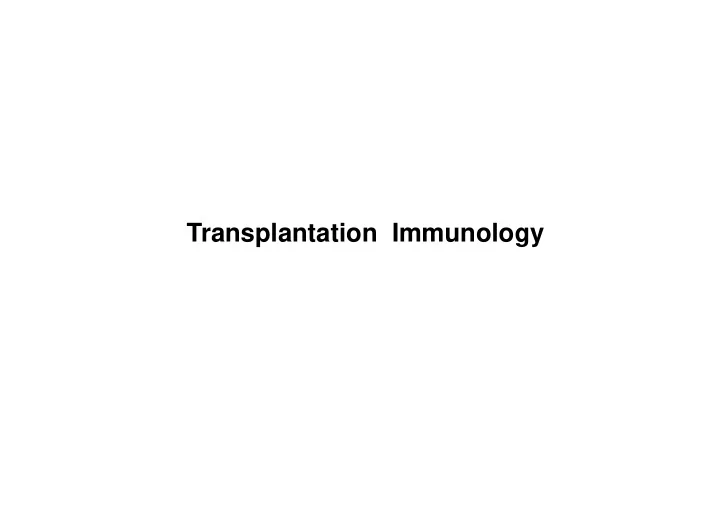

Transplantation Immunology
Grafts Autologous (autograft): from one individual to the same individual Syngenic : between two genetically identical or syngeneic individuals Allogenic (allograft): between two genetically different individuals of the same species Xenogenic (xenograft): between two genetically different individuals of different species
Genetics of graft rejection Rejection is caused by MHC antigens
First-set and second-set rejection B A Rejection is mediated by lymphocytes
Rejection of skin grafts
Direct and indirect presentation of MHC alloantigens
Direct alloantigen recognition Positive selection in the thymus allows all T lymphocytes that recognize MHC molecules to survive. Negative selection eliminates T lymphocytes with strong affinity for self-MHC molecules, but T lymhocytes with strong affinity for non-self (allo) MHC molecules survive High frequency of allo-reactive T lymphocytes (~2%) Each allogenic cell can activate many T lymphocyte clones Density of alloantigens is higher than self-MHC/antigens
Mixed leucocyte reaction
Hyperacute and acute rejection
Chronic rejection
Minor Histocompatibility Antigens (H)
Graft-versus-host-disease (GVDH) Caused by the donor T lymphocytes after bone-marrow transplantation, but also after transplantation of organs that contain T lymphocytes Acute GVHD: skin, liver, gastrointestinal tract (rash, jaundice, diarrhea) Chronic GVDH: organ fibrosis and dysfunction
Recommend
More recommend